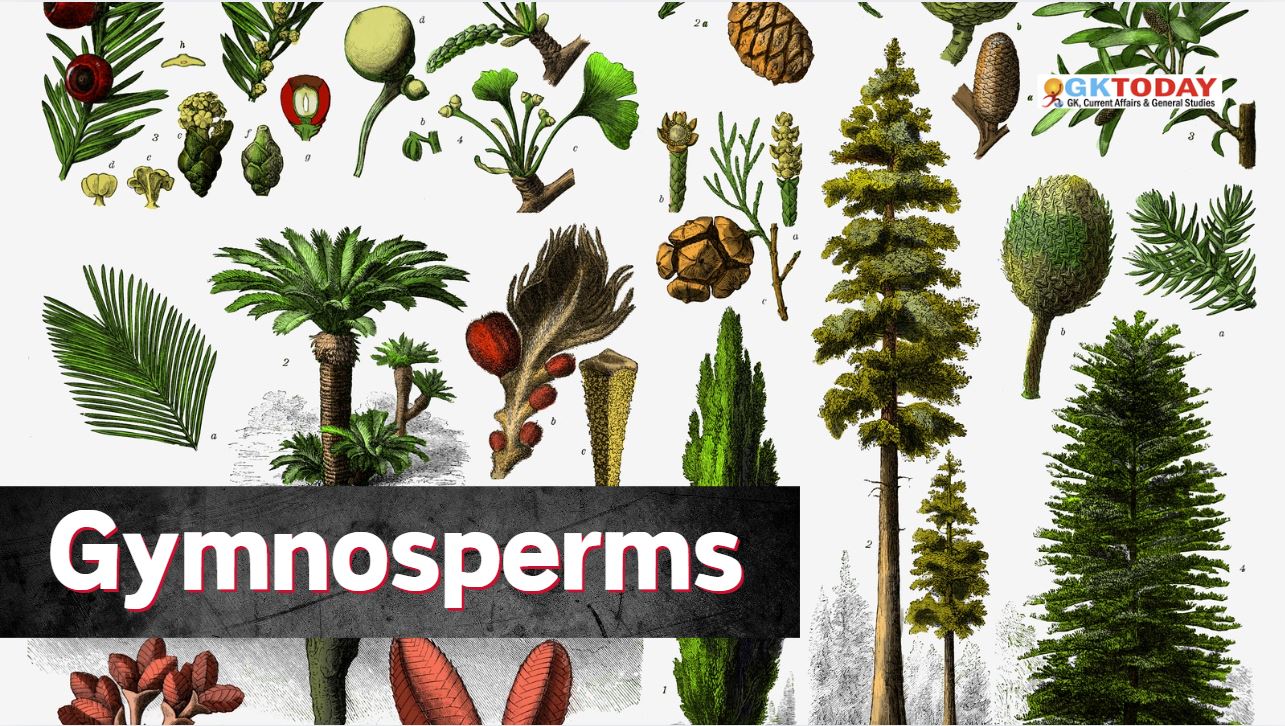Gymnosperms
Gymnosperms are called so because they have naked ovules / seeds. In terms of plant evolution, they are first seed-bearing plants. They are inferior to Angiosperms because in Angiosperms, the ovules are covered. Common gymnosperms include Conifers, Cycads, Ginkgo, and Gnetales.
Notable Points
- Tallest plant of the world “Coast Redwood of California” is a gymnosperm.
- Some Gymnosperms are called the “living fossils” because many of them represent the one of the few, if not the only, surviving members of a taxonomic group, with no close living relatives. Cycas and Ginkgo Biloba are examples of living fossils.
- Canada Balsum, the sticky colourless and odourless liquid used in optical industry is obtained from a Gymnosperm.
- Ephedrine is obtained from Ephedra which is a naturally growing Gymnosperm in Rajasthan.
- Sago, which is a staple food in New Guinea and some other countries is obtained from Cycas revoluta and
- Chilgoza is obtained from Pinus gerardiana, known as the Chilgoza Pine. Chilgoza is one of the most important cash crops of tribal people residing in the Kinnaur district of Himachal Pradesh, which seems to be the only place in India where Chilgoza pines are found.
- Cedar wood is obtained from many species of the Gymnosperms. Similarly Chir wood is obtained from Chir Pine or Pinus longifolia. The Pinus species of Gymnosperms contain the “winged pollen grains”.


